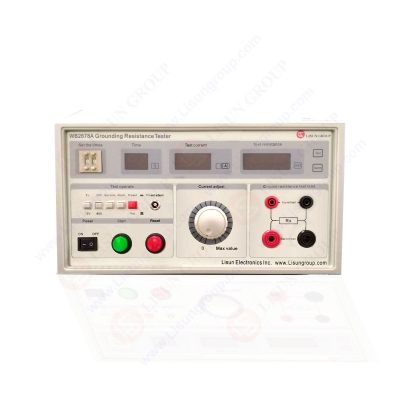
What is Ground Resistance?
Ground resistance refers to the resistance encountered by current flowing from the grounding device into the earth and then dispersing to another grounding body or to the distant area. It includes the resistance of the grounding wire and grounding body itself, the contact resistance between the grounding body and the earth, as well as the resistance of the earth between two grounding bodies or from the grounding body to the distant earth.
Ground resistance is crucial for several reasons:
• Safety: Proper ground resistance ensures the safety of electrical devices by providing a low-resistance path for fault currents to flow to the ground, preventing electric shocks and other hazards.
• Interference Suppression: In systems with single-point grounding and high interference, good ground resistance performance is essential for suppressing interference and reducing electrical equipment failures.
• Equipment Protection: Adequate ground resistance helps protect equipment from voltage surges, lightning strikes, and other external factors, extending the lifespan of the equipment.
WB2678A Grounding Resistance Tester
Ground resistance is divided into three main types:
• Protective Grounding: This type of grounding is designed to prevent electrically conductive enclosures of equipment from becoming energized due to insulation failure, thus ensuring personnel safety.
• Antistatic Grounding: Antistatic grounding aims to prevent the buildup of static electricity on flammable materials, such as oil tanks, pipelines, and electronic devices, by providing a path for static charges to dissipate safely to the ground.
• Lightning Protection Grounding: Lightning protection grounding is used to safely dissipate lightning strikes into the ground, reducing the risk of damage to electrical equipment, personnel, and property.
• Ground resistance testers are essential instruments for measuring ground resistance, soil resistivity, ground voltage, AC current, leakage current, and other parameters. They find applications in various fields, including power, telecommunications, meteorology, construction, lightning protection, and industrial electrical equipment.
Types of Ground Resistance Testers:
• Clamp-type Ground Resistance Testers: These testers are designed for on-site measurement of ground resistance, soil resistivity, ground voltage, leakage current, AC current, and DC resistance. They are suitable for measuring large grounding systems and can accurately measure the resistance of single-point and mesh grounding under various conditions.
• Large Ground Grid Resistance Testers: These testers are specifically designed for high-precision testing of ground resistance and related parameters in applications such as substations. They provide accurate and stable measurements in harsh electromagnetic environments and are ideal for measuring the characteristics of large and medium-sized grounding grids.
• Intelligent Insulation Resistance Testers: These testers are suitable for testing various high-voltage equipment, including switches, transformers, reactors, capacitors, motors, generators, and cables. They can measure insulation resistance (IR), polarization index (PI), and dielectric absorption ratio (DAR), ensuring the safe operation of equipment.
Conclusion:
Ground resistance testers play a vital role in ensuring the safety and reliability of electrical systems. Choosing the right tester for specific applications is essential to ensure accurate measurements and improve work efficiency. Different types of testers have different characteristics and advantages, so it is important to consider the actual requirements and environmental conditions when selecting equipment to ensure that the purchased devices meet the requirements and perform optimally.
https://www.lisungroup.com/news/technology-news/exploring-ground-resistance-and-ground-resistance-testers-ensuring-the-safe-operation-of-electrical-systems.html
.jpg)
Comments
Post a Comment